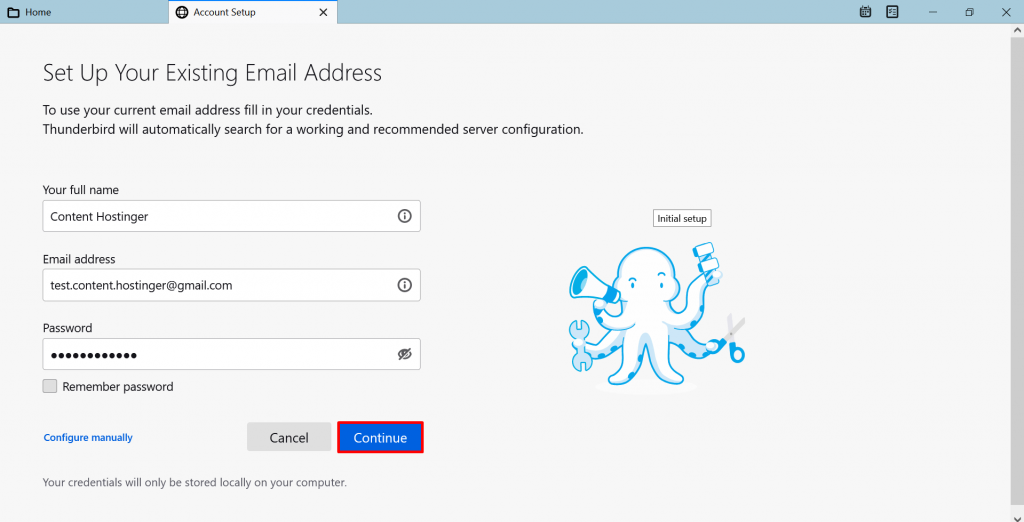

Complete guide to Thunderbird login, Thunderbird account login process, troubleshooting tips, and support options for accessing your email client securely.
Mozilla Thunderbird is a free, open-source email client developed by the Mozilla Foundation. It allows users to manage multiple email accounts, news feeds, and chat services from a single application. Thunderbird is available for Windows, macOS, and Linux operating systems.

Thunderbird Email Client Interface
Access and manage all your email accounts (IMAP, POP3) from different providers in one place.
Built-in phishing protection, encryption support, and automatic updates for security patches.
Quickly find emails with Thunderbird's robust search and filtering capabilities.
Customize your experience with add-ons and themes from the Thunderbird ecosystem.
Manage your schedule with the built-in Lightning calendar extension.
Organize your emails with tags, folders, and advanced filtering options.
Thunderbird offers numerous advantages for personal and professional email management:
As an open-source project by Mozilla, Thunderbird prioritizes user privacy and doesn't collect your personal data.
Available for Windows, macOS, and Linux, allowing seamless use across different devices.
Tailor the look and functionality to your preferences with themes and extensions.
Completely free to use with no premium tiers or paywalls for essential features.
Regular updates with new features, security patches, and performance improvements.
Follow these step-by-step instructions to set up and login to your email account in Thunderbird:
First, download the latest version of Thunderbird from the official website and install it on your computer.
Open the Thunderbird application after installation. You'll see the welcome screen with options to set up your email.

Thunderbird Initial Setup Screen
Click on "Email" to begin setting up your email account. You'll be prompted to enter your name, email address, and password.
Input your full name (as you want it to appear), your complete email address, and the password for your email account.
Thunderbird will attempt to automatically configure your email settings. For most major providers (Gmail, Outlook, Yahoo, etc.), this works seamlessly.
If automatic configuration fails, you'll need to manually enter your server settings:

Manual Server Configuration in Thunderbird
After successful configuration, Thunderbird will download your emails. You can now access your account whenever you open Thunderbird without needing to login again (unless you've set up master password protection).
If you're having problems with your Thunderbird account login, try these solutions:
Double-check your password. If you've recently changed it, update it in Thunderbird's Account Settings. Consider using the "View saved passwords" option in Thunderbird's preferences to verify what's stored.
Ensure you have an active internet connection. Try accessing your email through webmail to confirm the service is operational. Check firewall settings that might block Thunderbird.
Verify your server settings with your email provider. Many providers have specific requirements for third-party clients like Thunderbird. Gmail users may need to enable "Less secure app access" or use App Passwords if 2FA is enabled.
Confirm you're using the correct ports and encryption methods. Most modern email services require SSL/TLS encryption on specific ports (993 for IMAP, 995 for POP3, 587 for SMTP).
Ensure you're running the latest version of Thunderbird. Older versions may have compatibility issues with updated email server requirements.
If all else fails, consider creating a new Thunderbird profile while keeping your old one as backup. Profile corruption can sometimes cause login issues.
If you're still experiencing problems with your Thunderbird account login, consider these support options:
The Mozilla Support website offers comprehensive guides and troubleshooting articles for all Thunderbird-related issues, including login problems.
Thunderbird has an active user community where you can search for solutions or ask questions about your specific login challenges.
For immediate assistance with your Thunderbird login issues, consider using professional support services that specialize in email client troubleshooting.
Keep your Thunderbird account secure with these best practices:
Enable Thunderbird's master password feature to encrypt stored email passwords. This adds an extra layer of security if someone gains access to your computer.
If your email provider supports 2FA (like Gmail or Outlook), enable it and use app-specific passwords for Thunderbird.
Keep Thunderbird updated to ensure you have the latest security patches and features.
Only install extensions from trusted sources, as malicious add-ons could compromise your email security.
Regularly check your email provider's security settings for any unusual access attempts.
Logging into your Thunderbird account is typically a straightforward process, especially with the automatic configuration feature that works with most major email providers. By following the steps outlined in this guide, you should be able to set up and access your email accounts in Thunderbird without difficulty.
Remember that Thunderbird stores your login credentials (protected by a master password if you enable this feature), so you won't need to login each time you open the application. This provides convenient access to your emails while maintaining security when configured properly.
For users managing multiple email accounts, Thunderbird offers an efficient way to centralize your communications with robust organization tools, powerful search capabilities, and extensive customization options through add-ons and themes.
If you encounter any persistent issues with your Thunderbird login, don't hesitate to seek support through official channels or professional services to get back to managing your emails efficiently.